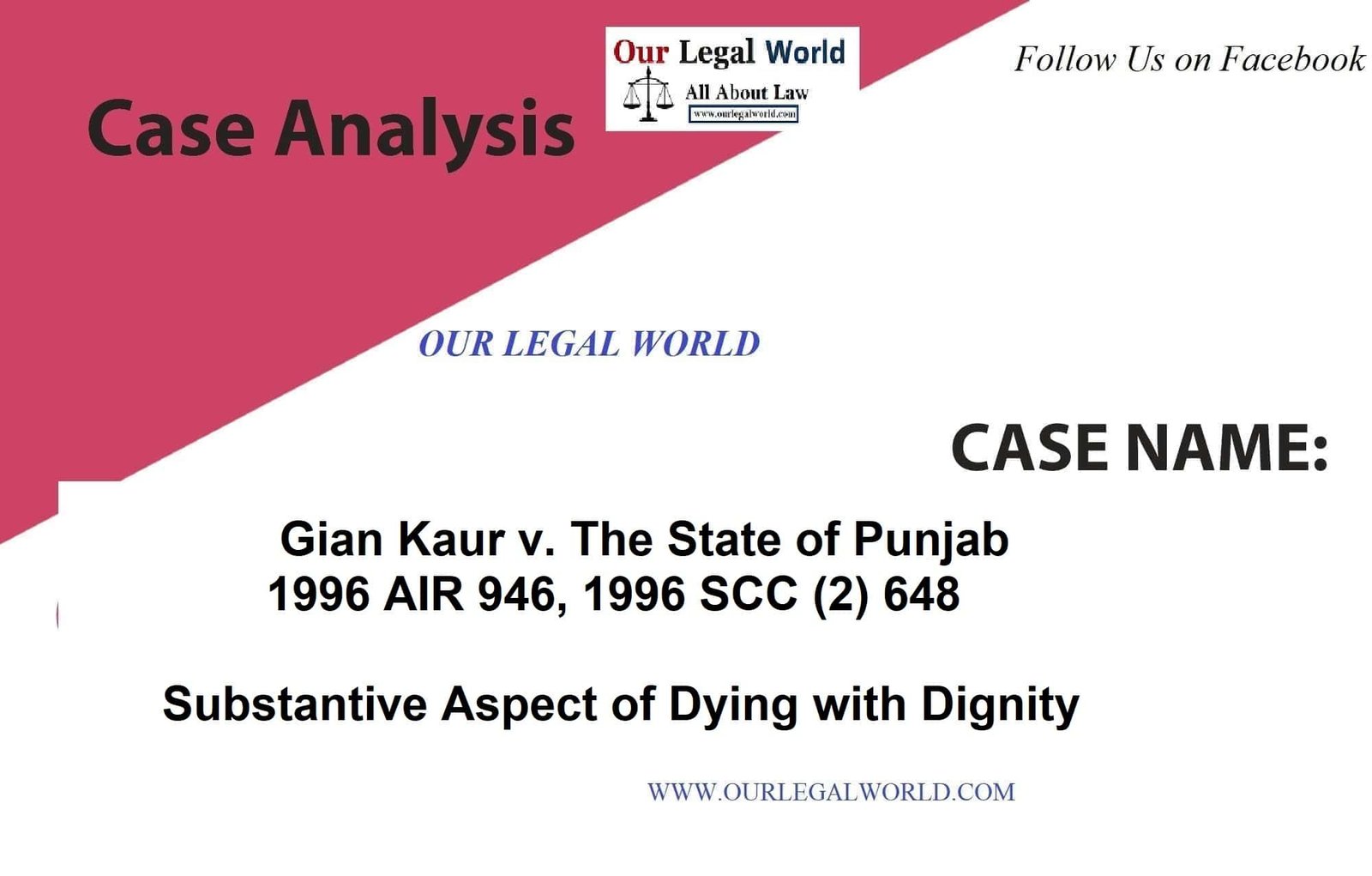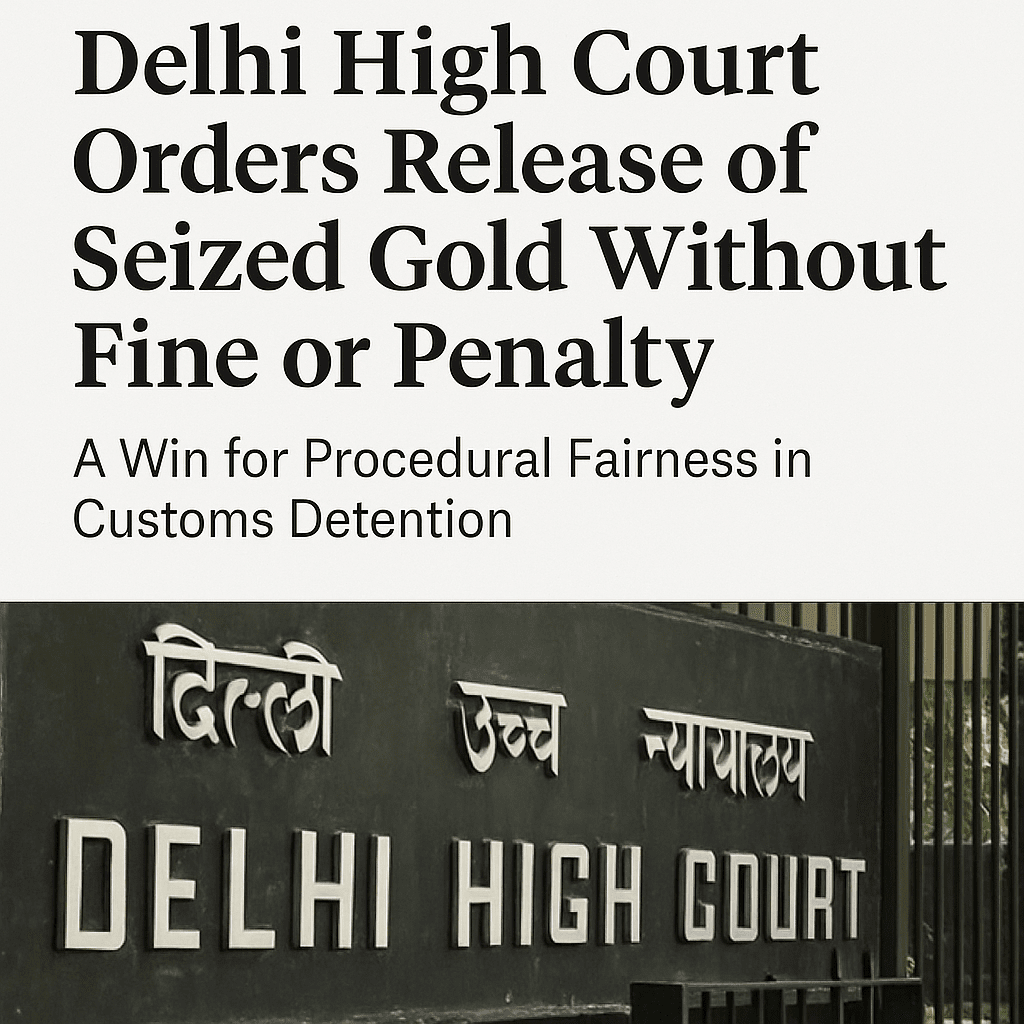Gian Kaur vs. The State of Punjab, 1996
In Supreme Court of India 1996 AIR 946, 1996 SCC (2) 648 Petitioner Gian Kaur Respondent The State of Punjab Date of Judgement 21 March, 1996 Bench J.S. Verma, G.N. Ray, N.P. Singh, Faizan Uddin, and G.T. Nanavati JJ.
INTRODUCTION
The precious words of Thomaa Jefferson strike a chord, “the care of human life and happiness and not their destruction is the first and only legitimate object of good governance”.
In the appearance of delving what has unfolded into one of the most controversial issues that could have colossal aftermath on the very basic ethical concepts and most significantly, the sanctity of life. When we talk about the words, ‘Right to life’, which evokes exactly opposite sentiments. How such a thing can be called a right if we are using it to give up all of our rights? The mentioned right, i.e., the Right to die has been used as a semblance or a guise to include various other concepts that oppose the preservation of life.
In India, the paramountcy of life has been placed on the highest plinth. The most preserved and sacred right under Article 21 that is Right to life provided under the Constitution of India has received the widest possible interpretation under the very able hands of the Indian Judiciary. The right to life is inalienable and deep rooted in us and this vital point appears to be evaded by all those who keep on pressing for the Right to die.
BRIEF FACTS
– In the instant matter, the Petitioner, Gian Kaur and her husband Harbans Singh were charged and committed the offence of abetment to suicide of their daughter-in-law, Kulwant Kaur.
– For the same, they both were convicted by Trial Court under Section 306 of Indian Penal Code, 1860. So, they were sentenced to rigorous imprisonment for a term of 6 years each and were liable to pay the fine of Rupees 2000/- or in default of paying the same amount, further rigorous imprisonment for 9 months would be enforced.
– Further, they made an appeal at High Court who reiterated the Trial Court’s decision. However, the sentence of Gian Kaur has been reduced from 6 years to rigorous imprisonment for 3 years.
– Through Special Leave Petition, the said appellants approached the Supreme Court against their conviction sentence under Section 306 of Indian Penal Code, 1860.
ISSUES RAISED
1. Whether the Section 306 of the Indian Penal Code, 1860 is Constitutionally valid?
2. Whether Section 309 of the Indian Penal Code, 1860 violates Article 14 and 21 of the Indian Constitution?
PROVISIONS INVOLVED
Article 21 of the Constitution of India which deals with the ‘Right to Life and Personal Liberty’ states that “No person shall be deprived of his life or personal liberty except according to procedure established by law.
Article 14 of the Constitution of India deals with ‘Equality before the law’ and states that the State shall not deny to any person equality before the law or the equal protection of the laws within the territory of India.
Section 306 of The Indian Penal Code, 1860 which deals with “Abetment of suicide”
States that “If any person commits suicide, whoever abets the commission of such suicide, shall be punished with imprisonment of either description for a term which may extend to ten years, and shall also be liable to fine.”
Section 309 of The Indian Penal Code,1860 which deals with “Attempt to commit suicide.”
States that “Whoever attempts to commit suicide and does any act towards the commission of such offence, shall he punished with simple imprisonment for a term which may extend to one year 1 or with fine, or with both.
CONTENTIONS RAISED
Contentions raised by Petitioner
In the present matter, the Counsel of behalf of Petitioner contended that the judgment passed by Trial Court is of erroneous nature. It was strongly alleged that there was no any kind of abetment for attempt to suicide. The appellant had approached the High Court to plea for wanting to get rid of the said allegations. The contention was that the Section 306 of Indian Penal Code, 1860 should be held constitutionally invalid by referring to the case of P. Rathinam v. Union of India (1994 SCC (3) 394) in which the Court declared Section 309 of the Indian Penal Code, 1860 as unconstitutional by stating that it is violative of Article 21 of the Constitution.
In P. Rathinam case, it was held that ‘right to die’ falls within the ambit of Article 21 of Indian Constitution and any person aiding the enforcement of ‘right to die’ is merely aiding the implementation of Article 21 and this article is a fundamental right and it can not be penal.
The Counsel on behalf of the Petitioner further contended that the term life does not mean mere ‘animal existence’ but ‘right to live with human dignity’ and embracing the quality of life. Hence, interpreting, a person who is having ‘Right to life’ would likewise include right not to live that is right to die or terminate his own life. Further, the Petitioner contended that under the ancient India, a Brahman can get rid of his body either starving or drowning himself.
Further, one of the Counsel who appeared for the Petitioner further contended that Section 309 of Indian Penal Code, 1860 is violative of Article 14 of the Constitution and should be held unconstitutional on the grounds that the provision is discriminative and arbitrary in nature.
Contention raised by Respondent
The State being the Respondent, claiming the decision of the Trial Court and High Court to be reiterated by the Supreme Court. The Counsel on behalf of Respondents strongly contended that the Section 306 of the India Penal Code, 1860 which explains about the abetment of attempt to suicide is an independent and self reliant provision, thus, does not rely on Section 309 of the Indian Penal Code, 1860. Moreover, the Respondents wanting the ruling of P. Rathinam case to be stuck down as Section 309 of the Act is valid and Section 306 of the Indian Penal Code, 1860 does not violate Article 21 of the Constitution. The Respondents contented that ‘right to life’ is inherently inconsistent and in contravention with ‘right to die’ and thus right to die cannot fall within the ambit of Article 21 of the Constitution.
VERDICT OF THE COURT
The five-judge Constitutional Bench in the instant case held that the ‘right to life’ is inherently inconsistent and in convenient with the ‘right to die’ as is ‘death’ with ‘life’. The court observed that the ‘Right to life’ under Article 21 of the Indian Constitution does not include the ‘Right to die’ or ‘Right to be killed’. The Supreme Court propounded that right to life also consist the right to be dignified life till the time one reaches the point of death even including the dignified procedure of death, hence it includes the right of a man who is dying to also die with dignity when his or her life is waning.
The Apex Court made sure that ‘Right to die with dignity’ should not be misunderstood with the ‘Right to die’ in an unusual manner of death. The Court observed that expediting the process of natural course of death of any person which by God’s formation are impending in nature and permitting termination if life of any individual under such circumstances is not permitted and available for interpretation under Article 21 of the Constitution. Therefore, the contention made by the Petitioner on making the Section 309 of Indian Penal Code, 1860 to be unconstitutional, thus they violated the provisions of Article 21 of the Indian Constitution cannot be accepted. Further, the Apex Court also rejected the contention of questioning the Constitutional validity of Section 309 on the grounds of Article 14 of the Constitution.
The Court on the second issue affirmed that aided attempt to commit suicide and assisted suicide are made punishable and are considered as an offence for cogent reasons for the interest of society. The main objective of such provision is to prevent the inherent danger to the society in absence of such provisions. Section 306 of Indian Penal Code, 1860 enacts a distinct crime that can survive independent of Section 309 of the said Act. Whereupon, the Honourable Court made it crystal clear that the arguments made to support the plea for not punishing the person who attempts to commit suicide do not make use for the benefit of another person aiding in the commission of suicide or in the attempt of it. Hence, the decision made in P. Rathinam v. Union of India was struck down by the Supreme Court making Section 306 and Section 309 of the Indian Penal Code, 1860 constitutionally valid and making the accused person punishable for the offence committed under these Sections.
Also Read: Laxmi vs. Union of India and Ors. ( Acid Attack)
RATIO DECIDENDI
The Supreme Court observed that the attempt to commit suicide and any person who abets the commission of attempt to suicide does not in any means violates Article 14 and 21 of the Constitution. The Honourable Apex Court overruled the previous decision of P. Rathinam v. Union of India, hence making Section 306 and Section 309 of Indian Penal Code, 1860 constitutionally valid. The Supreme Court was of the opinion that life is defined as the right to live with dignity and the dead shall also happen in a dignified procedure. Therefore, a person leading a life with dignity shall not in any circumstance end his life in an undignified manner. The Apex Court proposed to ensure that no individual ends their life as a right to die, and hence it ensues to be a landmark decision for ‘Right to Die’ is not constitutionally valid.
CONCLUSION
The decision made in this case was made necessary only because of the reason of creation of the right to die in P. Rathinam case. The creation of such right means that abetment of suicide would become unconstitutional which is undoubtedly a crime. In other words, it is abetment of enforcement of a fundamental right. Prior to this decision, the Court gave the misapprehension that the fundamental right to life refers an individual’s right to end his life or right to die. But with the help of this instant case, the Supreme Court made it clear that the ‘Right to life’ refers the right to live a life with dignity. Therefore, it can be concluded that India being a welfare state is more focused and determined to protect the lives of its people.
Furthermore, the decision in this case has unlocked the veritable Hornet’s nest by its great remarks on euthanasia. It is courteously submitted that the Constitution Bench gave a landmark decision which has given the remarkable imprints on the decision making of Indian judiciary. Therefore, the decision in this case manifests that the individual’s life is more important and emphasised more on leading a life in dignified manner.
REFERENCES
- www.indianlegalsolutions.com
- https://lawtimesjournal.in/gian-kaur-vs-the-state-of-punjab
- www.scobserver.in
- www.indiankanoon.org
- https://blog.ipleaders.in/attempted-suicide-law/







![Tax Law Internship at Legum Attorney [Chamber of Ashish Panday], Delhi : Apply by 15th May 2025](https://www.ourlegalworld.com/wp-content/uploads/2025/05/IMG_0113-min.png)

